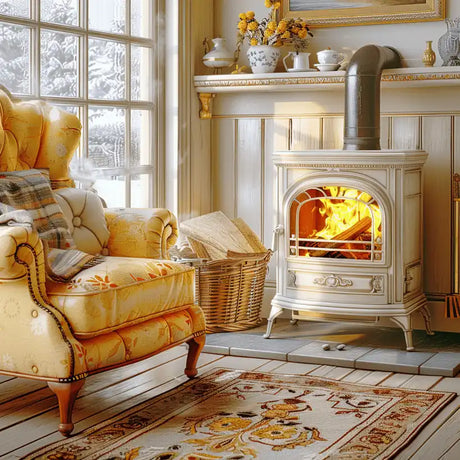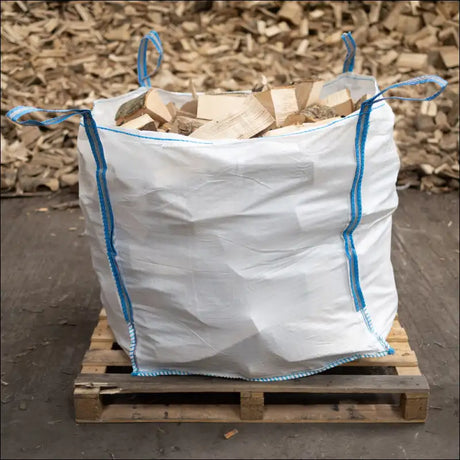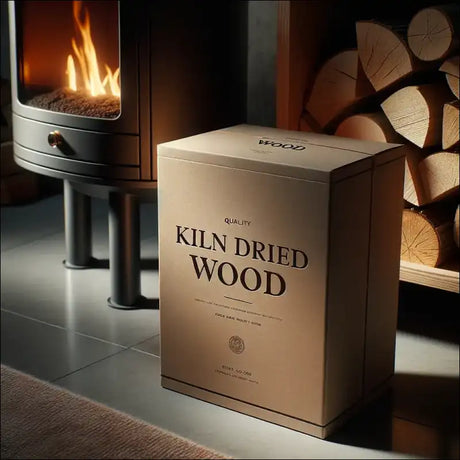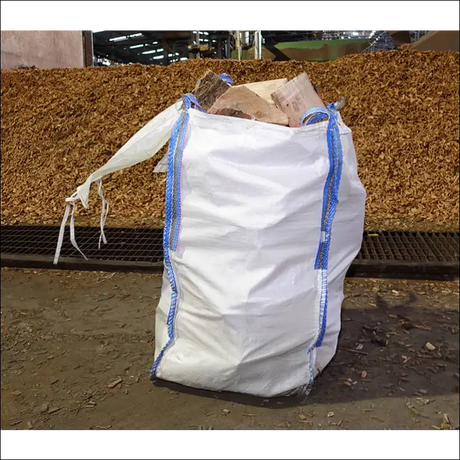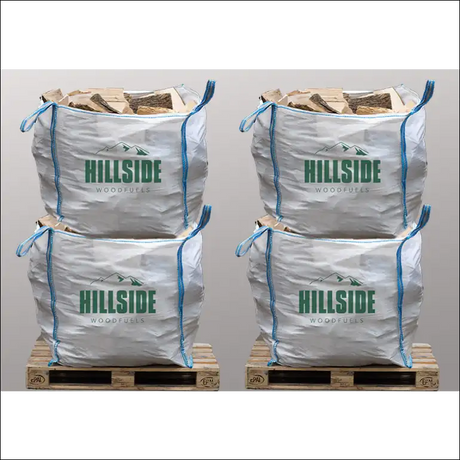Kiln dried wood can be excellent for outdoor use in cooking and heating applications like BBQs, pizza ovens, and fire pits. However, for outdoor construction or furniture, it's not ideal without proper treatment. Kiln dried wood isn't inherently weather-resistant or waterproof, so its suitability for outdoor use depends largely on the specific application and how it's protected from the elements.
Understanding Kiln Dried Wood
Before we dive deeper into the outdoor uses of kiln dried wood, let's clarify what it is and how it differs from other types of wood.
What is Kiln Dried Wood?
Kiln dried wood is lumber that's been dried in a controlled environment called a kiln. This process reduces the wood's moisture content to a specific level, typically between 6% and 8%. Kiln drying offers several benefits:
- Increased stability
- Reduced warping and twisting
- Lower risk of fungal growth
- Faster drying time compared to air-drying
How Does Kiln Drying Affect Wood Properties?
The kiln drying process significantly impacts the wood's properties:
- Moisture content: Kiln dried wood has a much lower moisture content than green or air-dried wood.
- Strength: The drying process can slightly increase the wood's strength and stiffness.
- Weight: Dried wood is lighter, making it easier to transport and work with.
- Dimensional stability: It's less likely to shrink or swell with changes in humidity.
Outdoor Use for Cooking and Heating
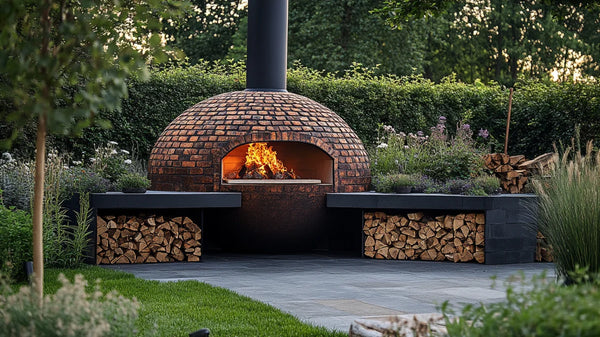
When it comes to outdoor cooking and heating, kiln dried wood shines. Here's why:
1. Efficient Burning
Kiln dried wood burns more efficiently due to its low moisture content. This makes it ideal for:
- BBQs: It produces less smoke and imparts a clean, flavourful taste to food.
- Pizza ovens: The high, consistent heat is perfect for crispy crusts.
- Fire pits: It provides a warm, long-lasting fire with minimal smoke.
2. Easy Ignition
The low moisture content makes kiln dried wood easier to light, which is a significant advantage for outdoor cooking where quick start-up times are often desired.
3. Consistent Heat Output
Kiln dried wood provides a more consistent heat output compared to unseasoned wood, making it easier to control cooking temperatures.
4. Less Smoke
Lower moisture content means less smoke, which is particularly beneficial for outdoor cooking where excessive smoke can be a nuisance.
Outdoor Use for Construction and Furniture
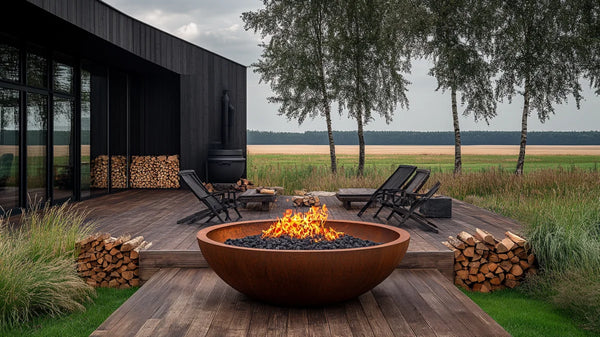
While kiln dried wood excels in outdoor cooking applications, it's not inherently suitable for outdoor construction or furniture without proper treatment. Here's why:
1. Lack of Natural Weather Resistance
Unlike some naturally weather-resistant woods like cedar or teak, most kiln dried lumber doesn't have inherent properties to withstand prolonged exposure to the elements.
2. Moisture Absorption
When exposed to rain or high humidity, kiln dried wood will absorb moisture from its surroundings. This can lead to swelling, warping, and potential decay if not properly protected.
3. UV Damage
Sunlight can cause untreated kiln dried wood to fade, crack, or degrade over time.
4. Insect Susceptibility
Some kiln dried woods may be more susceptible to insect infestation when used outdoors, especially if not treated with appropriate preservatives.
Protecting Kiln Dried Wood for Outdoor Construction
If you choose to use kiln dried wood for outdoor construction or furniture, taking proper precautions is essential:
1. Sealing and Finishing
Apply a high-quality, water-resistant sealant or finish to all surfaces of the wood. This helps prevent moisture absorption and UV damage. Remember to reapply the finish regularly based on the manufacturer's recommendations.
2. Proper Design and Installation
When using kiln dried wood in outdoor structures, design with water drainage in mind. Avoid direct ground contact and ensure proper ventilation to prevent moisture accumulation.
3. Regular Maintenance
Inspect outdoor wood structures regularly for signs of damage, decay, or finish wear. Clean the wood surface periodically and reapply finishes as needed.
4. Consider Pressure Treatment
For maximum durability, consider having your kiln dried wood pressure treated with preservatives. This process significantly enhances the wood's resistance to decay, insects, and weathering.
Storing Kiln Dried Wood Outdoors
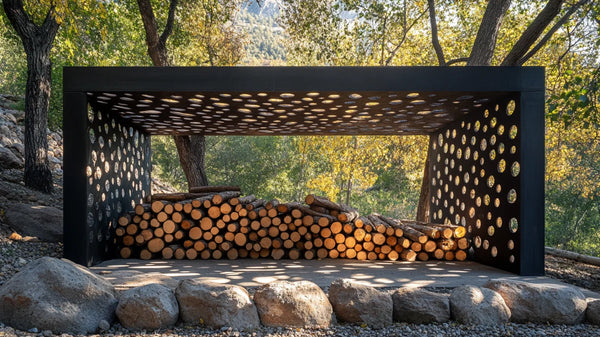
If you need to store kiln dried wood outdoors, follow these guidelines to maintain its quality:
- Elevate the wood: Keep it off the ground to prevent moisture absorption from soil contact.
- Cover thoroughly: Use a waterproof tarp or shelter to protect the wood from rain and snow.
- Ensure ventilation: Allow for air circulation to prevent condensation buildup under the cover.
- Stack properly: Use stickers (small wood spacers) between layers to promote airflow.
Can You Store Kiln Dried Wood in a Garage?
Yes, a garage can be an excellent place to store kiln dried wood. It offers protection from direct exposure to the elements while still providing some ventilation. However, keep these points in mind:
- Ensure the garage is dry and well-ventilated to prevent moisture buildup.
- Stack the wood off the floor using pallets or racks.
- If the garage is prone to dampness, consider using a dehumidifier.
Proper storage of kiln dried logs is crucial for maintaining their quality, whether for construction or as firewood.
Alternative Woods for Outdoor Construction
If you're looking for wood specifically suited for outdoor construction applications, consider these alternatives:
- Cedar: Naturally resistant to decay and insects.
- Teak: Highly durable and weather-resistant, often used in outdoor furniture.
- Redwood: Naturally resistant to decay and insect damage.
- Pressure-treated pine: Chemically treated to withstand outdoor conditions.
- Thermally modified wood: Heat-treated to improve durability and stability.
These woods often perform better in outdoor settings without requiring as much maintenance as kiln dried lumber.
Environmental Considerations
When using wood outdoors, it's important to consider the environmental impact. Sustainable wood sources for DIY projects are becoming increasingly important to environmentally conscious consumers. Look for wood certified by organizations like the Forest Stewardship Council (FSC) to ensure it comes from responsibly managed forests.
In Summary
The suitability of kiln dried wood for outdoor use depends largely on the specific application. For outdoor cooking and heating in BBQs, pizza ovens, and fire pits, kiln dried wood is an excellent choice due to its efficient burning, easy ignition, and minimal smoke production.
However, for outdoor construction and furniture, kiln dried wood requires careful consideration and treatment. It's not inherently weather-resistant or waterproof, making it susceptible to moisture damage, UV degradation, and insect infestation when exposed to the elements. With proper sealing, finishing, and regular maintenance, kiln dried wood can be used for these purposes, but naturally weather-resistant or pressure-treated woods may be better suited for long-term outdoor exposure.
When it comes to storage, kiln dried wood can be kept outdoors if properly covered and elevated, but indoor storage in a dry, well-ventilated area like a garage is ideal for maintaining its quality.
FAQ About Using Kiln Dried Wood Outdoors
How does kiln dried wood compare to air-dried wood for outdoor use?
Kiln dried wood has a lower moisture content and is more dimensionally stable than air-dried wood, making it less prone to warping or cracking when used outdoors. However, air-dried wood may retain more of its natural oils, potentially offering slightly better weather resistance.
Can I use kiln dried wood for a raised garden bed?
While kiln dried wood can be used for raised garden beds, it's not the best choice unless treated. Untreated kiln dried wood will absorb moisture from the soil and may rot quickly. Consider using naturally rot-resistant woods like cedar or pressure-treated lumber instead.
Is kiln dried oak suitable for outdoor furniture?
Kiln dried oak can be used for outdoor furniture, but it requires regular maintenance and sealing. Oak is relatively durable, but without proper treatment, it may crack, warp, or develop mould when exposed to the elements.
How long will untreated kiln dried wood last outdoors?
The lifespan of untreated kiln dried wood outdoors varies greatly depending on exposure and climate, but generally, it may start to show signs of weathering within 6-12 months and could deteriorate significantly within 2-5 years without proper protection.
Can I use kiln dried wood for outdoor signage?
Kiln dried wood can be used for outdoor signage, but it should be thoroughly sealed and regularly maintained. Consider using marine-grade plywood or naturally weather-resistant woods for longer-lasting outdoor signs.
What's the best finish for kiln dried wood used in outdoor projects?
For outdoor projects, use a high-quality, UV-resistant exterior wood sealer or marine-grade varnish. Products containing both waterproofing agents and UV inhibitors offer the best protection for kiln dried wood used outdoors.
Is kiln dried pine suitable for building a deck?
While kiln dried pine can be used for decking, it's not the best choice unless pressure-treated. Untreated pine is susceptible to rot and insect damage. Pressure-treated pine or naturally durable woods like cedar or composite materials are better options for decking.
How does humidity affect kiln dried wood used outdoors?
High humidity can cause kiln dried wood to absorb moisture, potentially leading to swelling, warping, or mould growth. In humid climates, it's crucial to properly seal the wood and ensure good air circulation in outdoor structures.
Can I use kiln dried wood for outdoor art installations?
Kiln dried wood can be used for outdoor art, but it requires thorough sealing and regular maintenance. Consider the lifespan of the installation and whether a more weather-resistant material might be more suitable for long-term outdoor exposure.
How does kiln dried wood perform in coastal environments?
Coastal environments are particularly challenging for kiln dried wood due to high humidity, salt spray, and intense UV exposure. Without excellent protection and frequent maintenance, kiln dried wood may deteriorate quickly in these conditions.
Is kiln dried wood suitable for building outdoor planters?
While kiln dried wood can be used for outdoor planters, it's not ideal unless very well-sealed. The constant exposure to moisture from watering can lead to rapid deterioration. Cedar, redwood, or composite materials are often better choices for long-lasting planters.
How does kiln dried wood compare to pressure-treated wood for outdoor use?
Pressure-treated wood is specifically processed to withstand outdoor conditions and is generally more durable for exterior use than untreated kiln dried wood. However, kiln dried wood is often preferred for its appearance and can be suitable if properly sealed and maintained.
Can kiln dried wood be used for outdoor structural support beams?
While kiln dried wood can be used for outdoor structural support, it's not recommended without proper treatment. For structural elements exposed to the elements, engineered wood products, pressure-treated lumber, or naturally decay-resistant species are safer choices to ensure long-term stability and safety.


